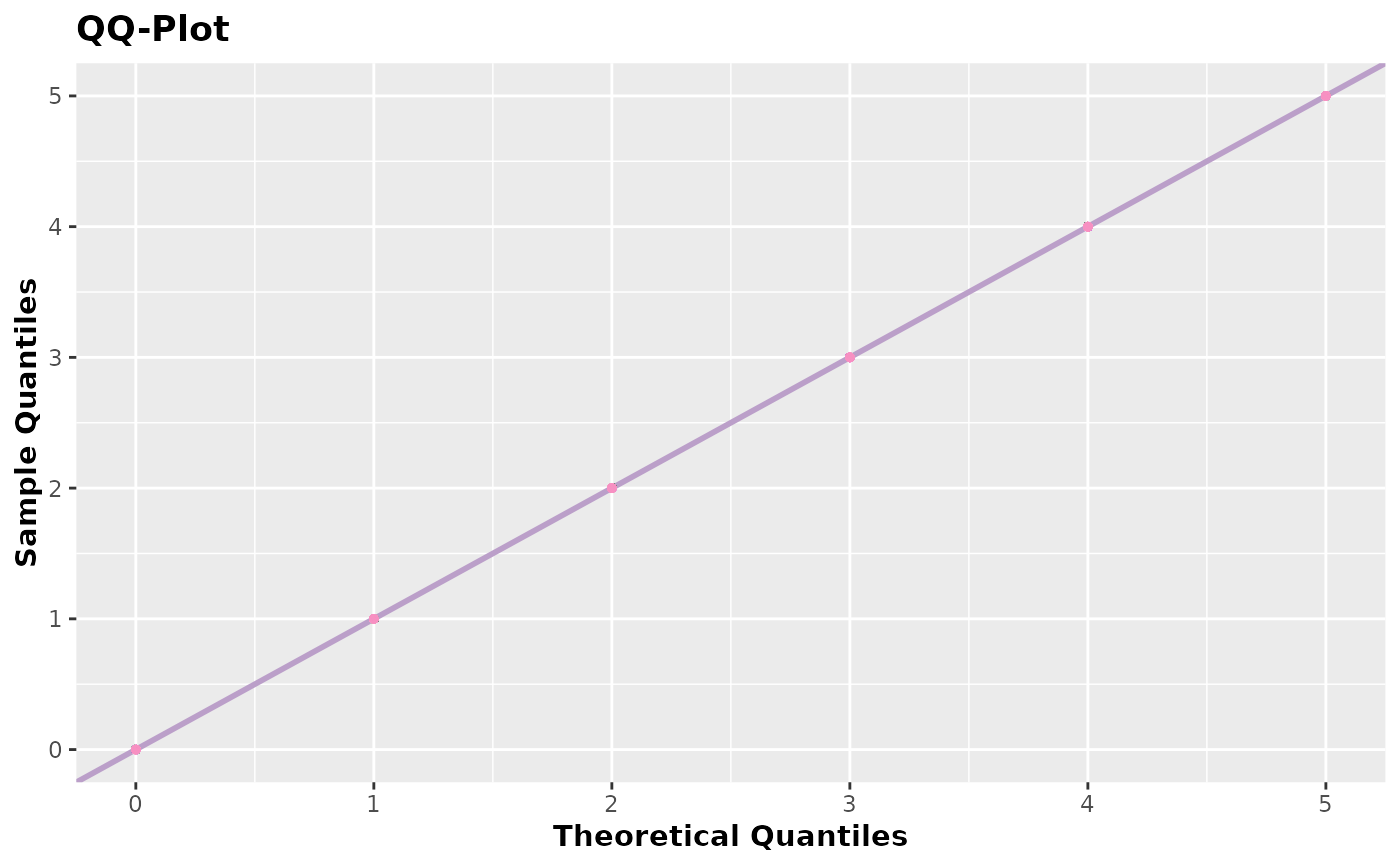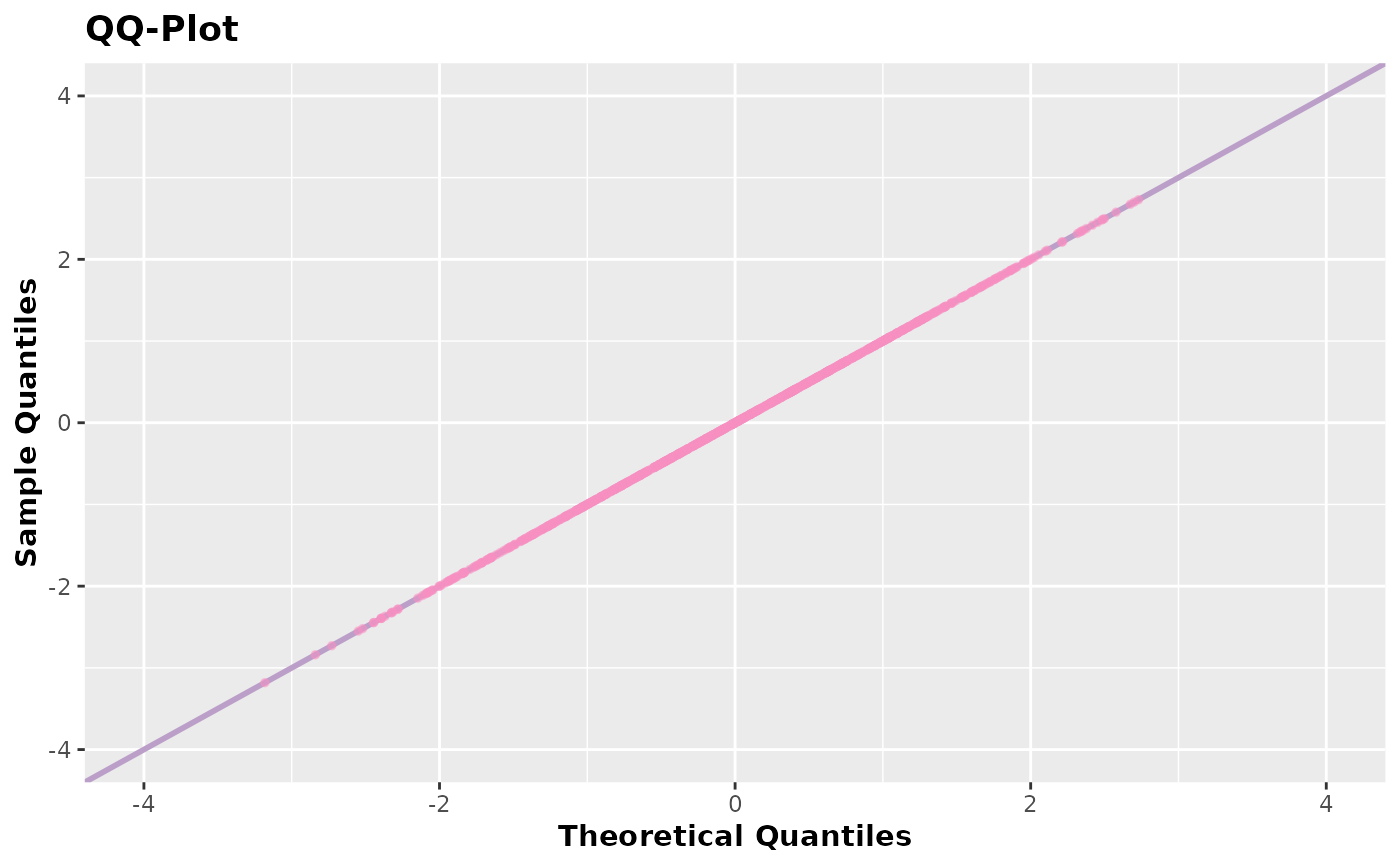
QQ-Plot Plot the QQ-Plot between observed quantiles and theoretical quantiles.
Source:R/qqplot.R
qqplot.accept_reject.RdQQ-Plot Plot the QQ-Plot between observed quantiles and theoretical quantiles.
Usage
# S3 method for accept_reject
qqplot(
x,
alpha = 0.5,
color_points = "#F890C2",
color_line = "#BB9FC9",
size_points = 1,
size_line = 1,
...
)Arguments
- x
Object of the class accept_reject returned by the function
accept_reject().- alpha
Transparency of the points and reference line representing where the quantiles should be (theoretical quantiles).
- color_points
Color of the points (default is
"#F890C2").- color_line
Color of the reference line (detault is
"#BB9FC9").- size_points
Size of the points (default is
1).- size_line
Thickness of the reference line (default is
1).- ...
Additional arguments for the
quantile()function. For instance, it's possible to change the algorithm type for quantile calculation.
Value
An object of classes gg and ggplot with the QQ-Plot between the
observed quantiles generated by the return of the function accept_reject()
and the theoretical quantiles of the true distribution.
Details
The function qqplot.accept_reject() for samples larger than ten thousand,
the geom_scattermost() function from the
scattermore library
is used to plot the points, as it is more efficient than geom_point() from
the ggplot2 library.
See also
qqplot.accept_reject(), accept_reject(), plot.accept_reject(), inspect() and
qqplot().
Examples
set.seed(0) # setting a seed for reproducibility
x <- accept_reject(
n = 2000L,
f = dbinom,
continuous = FALSE,
args_f = list(size = 5, prob = 0.5),
xlim = c(0, 5)
)
#> ! Warning: f(5) is 0.03125. If f is defined for x >= 5, trying a upper limit might be better.
qqplot(x)
 y <- accept_reject(
n = 1000L,
f = dnorm,
continuous = TRUE,
args_f = list(mean = 0, sd = 1),
xlim = c(-4, 4)
)
qqplot(y)
y <- accept_reject(
n = 1000L,
f = dnorm,
continuous = TRUE,
args_f = list(mean = 0, sd = 1),
xlim = c(-4, 4)
)
qqplot(y)
